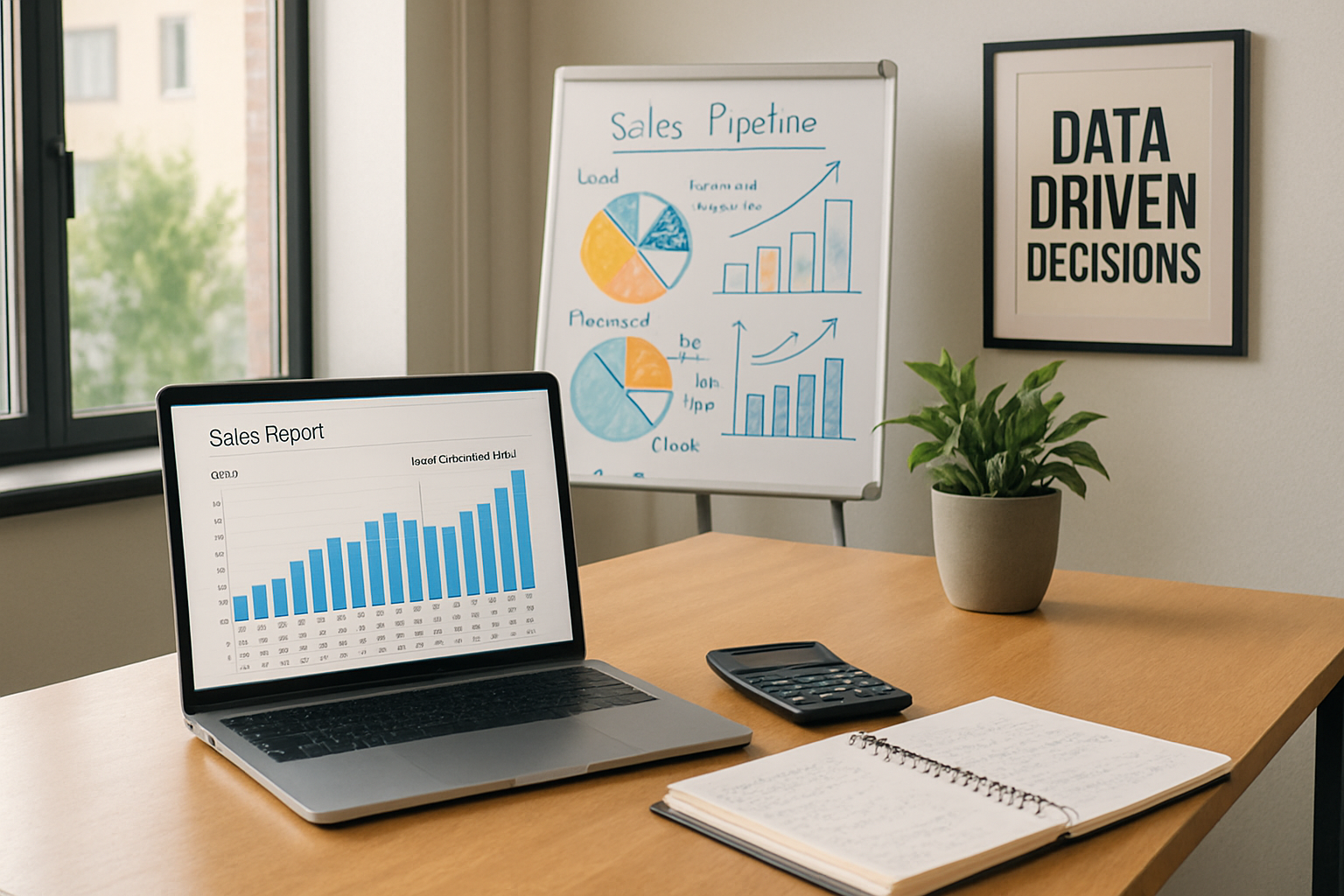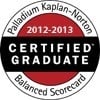You've got a revenue goal. It's a big, exciting number. But do you actually know what it takes to get there? Many business owners think more sales calls or a bigger marketing budget is the answer. The real key is knowing a different number: the exact amount of leads required per sale.
It sounds simple, but this one metric is the foundation for predictable business growth. Without it, you're just guessing with your money and your team's time. Calculating your specific leads required per sale is how you turn hopeful sales targets into a realistic, step-by-step sales plan.
Use Our Hubspot Inbound Marketing and Sales ROI Calculator to Find out the ROI you can Get From Using Hubspot Inbound Marketing and Sales Software.
The Problem With Guesswork in Sales
For years, I sat in boardrooms where business leaders would throw out massive revenue numbers. They'd say, "We need to hit $10 million this year." Everyone would nod, but no one could answer the most important question:
How?
They didn't know their lead pipeline conversion rates or have a clear demand generation strategy. They were steering a ship without a map, hoping they'd land on the island of profit. This approach rarely works and often leads to frustrated sales teams and wasted marketing efforts.
I once consulted for a company that was spending a fortune on ads. They were generating tons of inquiries but had trouble getting leads to convert into paying customers. They were frustrated, blaming the sales team and the marketers, but the real issue was a math problem they hadn't solved. They had no idea how many leads they actually needed to make one sale.
Your Numbers Tell a Story
You have to get your data first. Before you can build any model or set any realistic sales goals, you need a baseline. This doesn't require a fancy, expensive analytics platform; a simple spreadsheet and some discipline can get you started.
You need to look at your historical data. How many inquiries turned into meetings? How many meetings led to proposals? How many proposals became closed deals? According to HubSpot, clearly defining these stages is the first step toward a manageable sales process.
This information is your foundation. Without it, any calculation is just a work of fiction. Start tracking your site usage and leads generated from channels like social media and content marketing today if you aren't already. Every day you wait is another day you're flying blind.
Analyzing this data also helps you refine your ideal customer profile. You can see which types of leads turn into customers most often, allowing you to focus your resources on the right target market. Understanding their pain points and how your product solves them is critical for creating high-quality leads.
How Many Leads Required Per Sale Do You Need?
Now we get to the core of the issue. We're going to work your lead pipeline backward to figure out this magic number. Instead of looking at the total number of leads created, we'll start with the outcome you want: one single sale. This process flips the script and gives you a concrete action plan.
Let's use a straightforward example. Imagine your sales process has two main conversion points: getting an "Inquiry" to convert to a qualified prospect and then getting that qualified prospect to "Buy". This simplified model makes the math easy to see.
Let's say your historical data shows you have a 1% lead conversion rate from an initial Inquiry to a final Buy. You need to close one deal. The formula to determine the leads needed is simple division: you take the number of sales you want (1) and divide it by your lead conversion rate percentage (0.01).
This means one sale divided by a 0.01 conversion rate equals 100 inquiries. That's it. To get one single sale, you need 100 quality leads to enter your pipeline. This is your lead to sale ratio, a critical piece of information for your generation team.
Scaling the Math for Your Business Growth Targets

Knowing you need 100 leads for one sale is powerful. Now you can apply that ratio to your larger monthly sales goals. It's no longer about wishful thinking; it's about hitting a specific, measurable sales target.
What if your goal isn't one sale, but 35 sales for the quarter to hit your sales target? We just apply the same math. If one sale needs 100 inquiries, then 35 sales need 35 times that amount. This simple calculation helps both the marketing and sales departments understand the volume required to achieve sales.
This can also vary depending on deal sizes. If you have different products or services, you may need separate calculations. A smaller deal might convert at a higher rate and require fewer leads than a large, complex enterprise deal.
| Desired Sales (Buys) | Conversion Rate (Inquiry to Buy) | Total Leads Required (Inquiries) |
|---|---|---|
| 1 | 1% | 100 |
| 10 | 1% | 1,000 |
| 35 | 1% | 3,500 |
| 50 | 2% | 2,500 |
To hit your quarterly goal of 35 sales with a 1% conversion rate, you need 3,500 leads. Now you have a real number to take to your marketing team. The conversation changes from a vague "we need more leads" to a specific "we need to generate 3,500 qualified inquiries this quarter."
What This Number Means for Your Business
Calculating the leads required per sale impacts almost every part of your organization. It's not just a sales forecasting metric. It shapes your entire growth strategy and provides clarity for everyone from the finance team to the generation team.
First, it grounds your sales profit goals in reality. If your average sale brings in $5,000 in profit and you need 100 leads to get that sale, each lead contributes about $50 toward your bottom line. This helps you determine your lead acquisition cost and how much you can spend to acquire a quality lead and still be profitable. A proper break-even analysis for business can't be done without knowing these costs.
It also helps distinguish between a lifestyle business vs. a scalable business. A scalable business runs on predictable systems, and knowing your lead to sale ratio is a critical system. It allows you to use automation tools to pour more fuel on the fire—more ad spend, more salespeople—and know what results you can expect. This clarity empowers your sales plan and helps you increase revenue methodically.
A Personal Story From the Field
I worked with an enterprise software company selling complex, high-ticket solutions. Their sales cycles were long, and the cost of each sale was very high. The sales team was convinced they just needed to be in front of more prospects.
We spent a month digging into their data. We analyzed everything from website visits to closed deals to understand their pipeline conversion rates. We discovered their true lead-to-sale conversion rate was a tiny 0.5%.
Their annual goal was 20 new customers. Using our new ratio, we calculated they needed 4,000 qualified leads for the year. The marketing team was only generating about 1,000. For the first time, everyone in the room understood the massive gap between their sales goals and their activities. The problem wasn't the sales team's closing ability; it was a lead volume problem rooted in their lead generation process.
This insight changed everything. They reallocated their budget toward a focused lead generation plan that included new generation strategies and a partner program. They were able to hit sales the following year because they stopped guessing and started operating from a position of clarity.
The Next Step: From Leads to Customers
Once you've figured out how many leads you need for a single sale, you're on the right track. You've solved a major piece of the puzzle. But the journey doesn't end there. The key is to constantly work to improve lead quality and your conversion rates.
The next step is to determine how many total customers you must generate to hit your annual revenue goals. Knowing your leads required per sale is the building block for your entire customer acquisition model. This is how you build a machine that produces predictable growth and helps you meet sales targets year after year.
You should also refine lead scoring to prioritize the best prospects. This allows your sales teams to focus their energy on the leads that are most likely to become paying customers. For those not yet ready, you can nurture leads with targeted content until they are prepared to make a purchase decision.
There are many frequently asked questions about this process, but the most common is how to improve the lead conversion rate percentage. This involves everything from improving your website's call-to-actions to providing your sales team with better training. Small improvements in your lead conversion rates can dramatically reduce the number of leads needed to hit your goals.
10 Best Practices for Using This Metric
- Always start with real historical data, not assumptions.
- Make sure your sales pipeline stages are clearly defined.
- Calculate lead conversion rates between each stage of your funnel.
- Work backward from your sales goal, not forward from your leads.
- Share this number with both your sales and marketing teams.
- Review and update your lead-to-sale ratio every quarter.
- Factor in your average deal sizes when setting goals.
- Use this metric to justify your marketing budget to the finance team.
- Tie your lead-to-sale ratio to your team's sales quotas.
- Don't just track the number; use it to make better decisions to improve the lead generation process.

Conclusion
Stop chasing revenue goals without a plan. The path to predictable growth starts with knowing your numbers, and the most important one is the amount of leads required per sale. By calculating this single metric, you transform your entire sales and marketing strategy from a guessing game into a science.
This clarity allows you to set a better sales target, create a smarter lead target for marketing, and build a team that knows exactly what it takes to win. You can finally align your departments, justify budgets, and create a sustainable engine for growth. Knowing your numbers is the first step to controlling your future.
We are a full-service Hubspot Certified Inbound Marketing and Sales Agency. In addition, we work to integrate your SAP System with Hubspot and Salesforce, where we have a deep delivery capability based on years of experience. Please our book a meeting service to get started.




